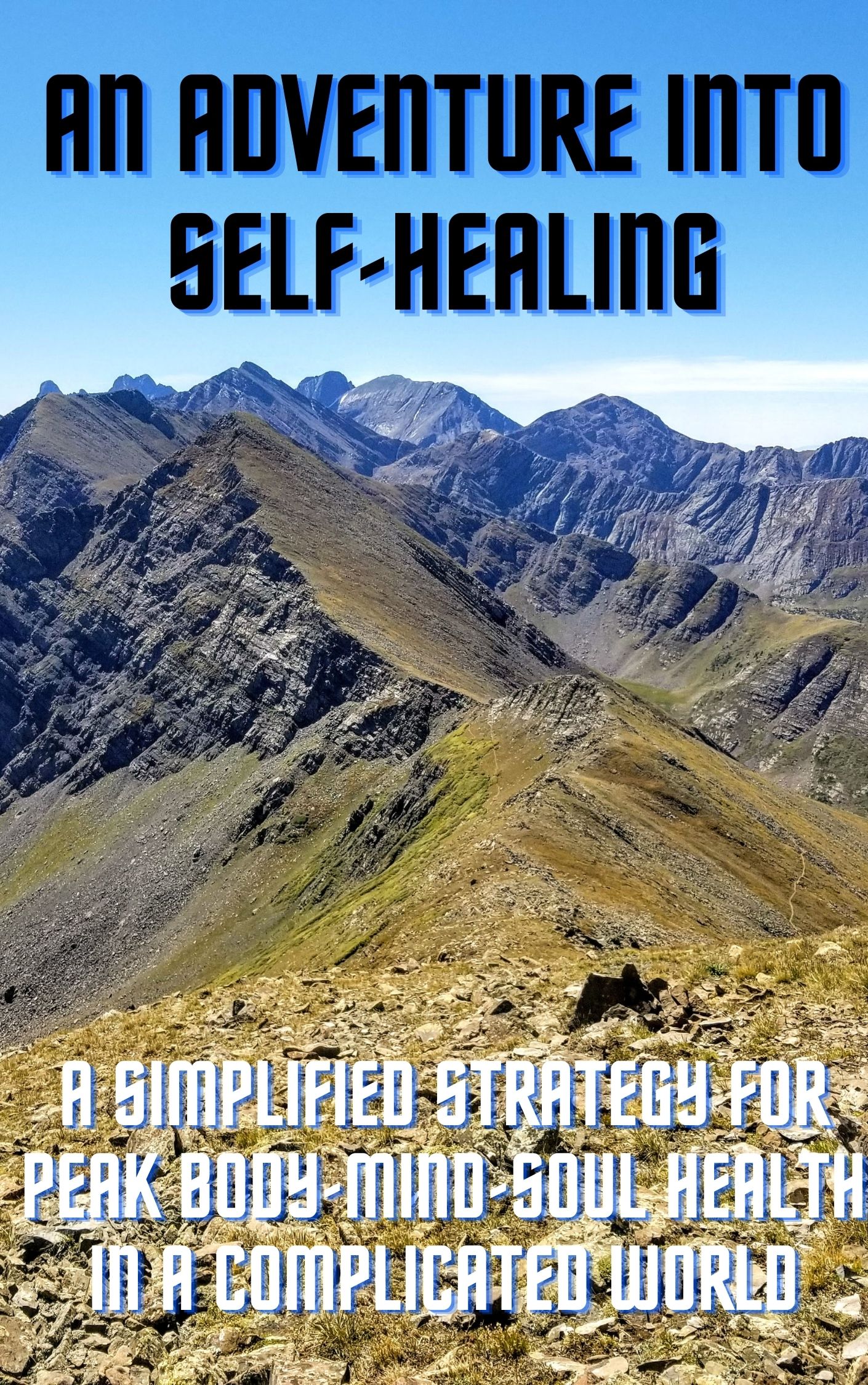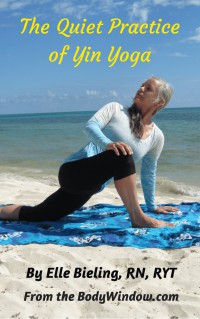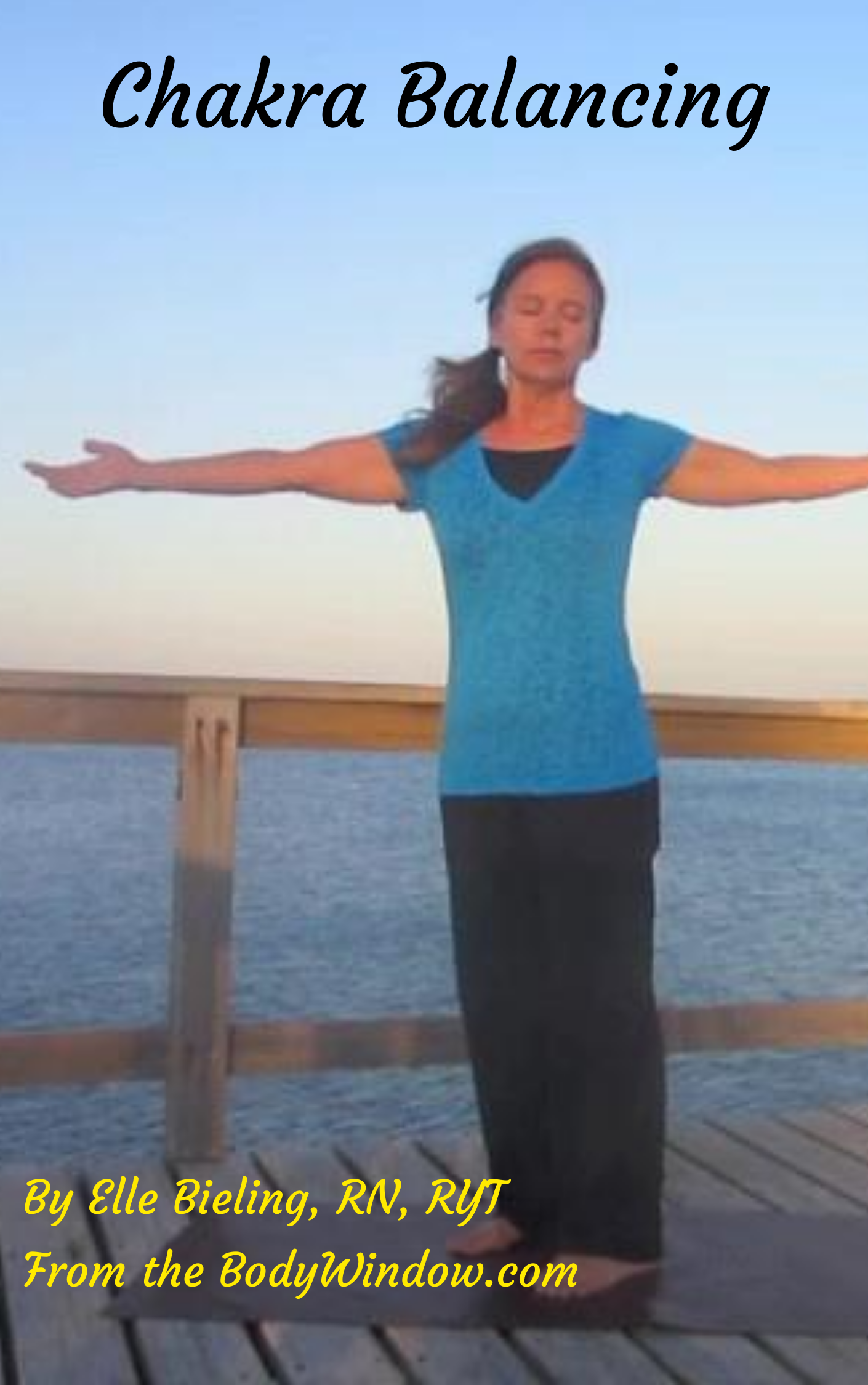Way ~ Through Your Body!
- Home
- Dis-ease Prevention
- Vitamin D Deficiency
Preventing Vitamin D Deficiency
Do you have vitamin D deficiency because you are getting insufficient fun in the sun?
'We estimate that vitamin D deficiency is the most common medical condition in the world.' ~ Dr Michael F. Holick, Vitamin D expert.
My eyes were first opened up to the issues of vitamin D when I signed up for blood tests at the local health fair. In the days before the Affordable Health Care Act, my husband and I were self-insured and on a high-deductible health plan, so we took advantage of the local health fairs for low-cost screening.
The Body Window's Self-Guided Healing Course is Now Reduced to only 19.95 USD!
Click here to learn more about how this healing course can change your life!
For
the first time, I noticed one of the blood screening tests was
for vitamin D. This surprised me, because I hadn’t known of
the recommended screening. All the other blood tests were familiar:
the complete blood count, the blood chemistry panel, PSA and lipid
panels. I thought I’d better educate myself on this issue.
The information that I found regarding vitamin D deficiency was astounding. Many people, including physicians have jumped on the bandwagon that vitamin D is the panacea for everything that ails you!
Since I am NOT selling you anything in this article, my suspicious nature was alerted. It seems to me that once again, someone is pushing their products on the auspices of scientific evidence.
In the article to follow, I will try to demystify the information and misinformation that is available on this nutrient.
The role of Calcium and Vitamin D
While almost everyone knows of the relationship of calcium and vitamin D for bone health and normal calcium metabolism, not all understand the current thinking about vitamin D deficiency.
In the 1930’s vitamin D was added to milk in the USA, due to the understanding that vitamin D was a necessary ingredient for the absorption of calcium in the body.
Rickets, a common disease in children, happens when the body, due to a lack of sufficient vitamin D, does not absorb enough calcium. This leads to bone malformation and deformities. Due to the fortification of common food products such as milk, milk products, breakfast cereals and some fruit juices, rickets is no longer a major problem in the USA.
However, in adults, calcium and vitamin D deficiency may lead to osteomalacia (demineralization of bone) and osteoporosis (a measurable decrease in bone mass, leading to fractures and potential debilitation), common conditions of epidemic proportions in post-menopausal women and in elderly men.
Calcium and vitamin D deficiency results in bones becoming thin, brittle or misshapen. Debilitating bone pain is a problem if left untreated. It is estimated that perhaps ½ of all elderly over the age of 75 will be affected.
So if none of this information on bone health and the relationships of calcium and vitamin D, is new, what is all the recent commotion about? Isn’t it enough if I just drink milk or take a supplement?
Vitamin D and Your Overall Health
Because vitamin D is not really a vitamin, but actually a hormone, it is also involved in the modulation of cell growth, neuromuscular and immune function, and reduction of inflammation. Ah, there’s that inflammation issue again! See my article on C-reactive protein if you want to learn more about inflammation and its associated problems.
It is because of these roles of vitamin D as an anti-oxidant and important nutrient in the body that so much focus has been turned to it. It is why you can read information ad nauseum about the benefits of vitamin d supplements.
In order to measure vitamin D deficiency, the scientific community has rushed to develop a blood test to measure levels in the blood. Caution is advised with this as a screening test, because the required levels in your blood for optimum health is controversial among scientists and no consensus has yet been established!
To add to the confusion, there are two types of blood tests for measuring the vitamin: 1,25(OH2)D and 25(OH)D. The second, 25(OH)D is the preferred test. This is validated by the National Institutes for Health (NIH), despite the difficulty in interpreting the test.
Make sure your doctor orders the 25 (OH)D test, if you choose to be screened for vitamin D deficiency. If you are willing to fork out your own money, you can even order your own test online! What a surprise!
Normal vitamin D levels in the blood for healthy adults are set at >50 nmol/L. If you are over 125 nmol/L you are at risk for toxicity (see below).
However, a lot of physicians do not know how to interpret this lab value, so know why you are doing the test if you are doing it on your own. Insufficient levels in your blood may not be a reason to run out and stuff yourself with a vitamin D supplement. Consult an expert, if you believe you are at risk (see below).
Did I personally get the test done? Yes, because it only cost me 40 USD at the health fair. However, after researching this article, I may not get it again. It may prove to merely be a money making-machine for the laboratories. In my mind the jury is still out.
There is so much hype surrounding vitamin D, unfortunately. A vitamin D deficiency in the blood has been associated with diabetes, autoimmune deficiencies, multiple sclerosis, heart disease and almost anything else you choose to name.
According to the NIH, this evidence is from in vitro studies, animal studies and epidemiological evidence. Very few randomized clinical trials in humans have been done to substantiate the claims.
Vitamin D and Cancer
Perhaps the most convincing evidence for disease and vitamin D deficiency is regarding colon cancer, prostate cancer and breast cancer. Strong epidemiological evidence exists for the protective nature of vitamin D.
However, once again in human clinical studies, results are not consistent. If you have these conditions, vitamin D supplementation will not hurt you, so you can use your own intuitive judgment in what to do.
The conclusion of the NIH: "Studies to date do not support a role for vitamin D, with or without calcium, in reducing the risk of cancer." They state, that thus far, low levels of this vitamin are associated with colon cancer, perhaps in men only, and in prostate and breast cancer.
Interestingly, high levels of vitamin D are associated with pancreatic cancer!! What’s a person to do??
Vitamin D ~ Recommended Intake
Food sources for vitamin D are not abundant. Most of this vitamin in food comes from supplemented foods as noted above. The vitamin does exist in high amounts in cod liver oil and other fish oils, such as salmon, mackerel and tuna.
Cod liver oil has over 1300 IU per tablespoon! Fortified milk, orange juice and yogurt have about ¼ the recommended daily allowance of 400 IU/day so it would take 4 servings to meet the daily requirement. If you are over the age of 70, the NIH recommends twice the daily dose of 800 IU/day.
Most health gurus would laugh at this low dose recommendation by the scientific community. But before you start gobbling supplements, read the next section.
Vitamin D Toxicity
Vitamin D is a fat-soluble vitamin, and therefore is stored in the fat tissues of your body. The potential for toxicity is a reality.
According to the NIH, "Vitamin D toxicity can cause non-specific symptoms such as anorexia, weight loss, polyuria (excessive urination), and heart arrhythmias. More seriously, it can also raise blood levels of calcium, which leads to vascular, and tissue calcification, with subsequent damage to the heart, blood vessels, and kidneys.
The use of supplements of both calcium (1,000 mg/day) and vitamin D (400 IU) by postmenopausal women was associated with a 17% increase in the risk of kidney stones over 7 years in the Women's Health Initiative."
Vitamin D toxicity from eating foods is highly unlikely. It is much more likely from high intakes of supplements containing the vitamin.
You may be a risk for vitamin D deficiency and may want to take a supplement if any of the following are true:
- You are over the age of 70. As we age the skin is less able to synthesize vitamin D and the elderly are less likely to spend time out of doors and are more likely to have a deficient diet.
- You never get out in the sun. People who live in a climate with limited sun, women who wear robes and head scarves, or the disabled and homebound are all potential candidates for vitamin D deficiency from lack of sun exposure.
- You have dark skin. The more melanin, or skin pigment you have, the less efficient you are at metabolizing vitamin D. Lower serum levels in dark skinned individuals has been documented, however, the effect of this on your health is unclear. Take this with a grain of salt!
- You have a problem with fat malabsorption. Because vitamin D is a fat soluble vitamin, there must be some fat in your gut to absorb it. Liver disease, cystic fibrosis and Crohn's disease all may fall into this basket.
- You are obese. While having excess fat does not slow down the absorption of vitamin D, the extra fat in the tissues may lock in the vitamin so that it is not released into the circulation efficiently.
- You have had gastric bypass surgery. Vitamin D is absorbed mainly in the small intestine. If part of this has been removed, it may reduce the body’s ability to take in the vitamin.
If you choose to take a vitamin D supplement and if you are on any medications at all, especially cholesterol lowering drugs, check with your doctor regarding interactions with your supplement.
Prevention of Vitamin D Deficiency ~ As Nature Intended
I love to eat fish. I have never tried cod liver oil. I don’t drink much milk, but I eat a lot of yogurt (not always fortified). I do spend as much time outdoors as possible. I can’t wait to see what my 25 (OH) D test shows.
The recommended daily intake of vitamin D from the NIH, above, is based solely on food and minimal sun exposure!
The scientific community does not have a sufficient way to measure how much vitamin D we get from the sun. According to Dr. John Cannell, Executive Director of the Vitamin D Council, "Humans make thousands of units of vitamin D within minutes of whole body exposure to sunlight. From what we know of nature, it is unlikely such a system evolved by chance." I wholeheartedly agree and will use the wisdom of God/the Universe to get enough for myself!
It has been suggested by some vitamin D researchers that 5-30 minutes in the sun between the hours of 10 am and 3 pm at least twice a week to the arms, legs, face and back WITHOUT sunscreen is sufficient to get your vitamin D needs.
Other holistic physicians are also recommending sun baths, just long enough to avoid the redness or erythema that comes with insufficient melanin on the skin. This means that if you stay in the sun long enough to cause the telltale redness, your sunbath was too long.
I recommend sun exposure on bare skin for a pre-erythema length of time on one side, then turning over the other side of your bare skin for an equal amount of time. This lengthens the time you can spend in the sun without the redness, ensuring the maximum vitamin absorption. Just make sure you are not getting red! I am definitely not a proponent of sunburn.
Sun screen is still a necessity when exposed to sunshine for a lengthy period of time. However, we have recently been so brainwashed to believe that seconds in the sun without sunscreen will cause melanoma. This is just not so. Small amounts of sun exposure is vital to your health.
Surprisingly, your latitude, your skin color or the season of the year, does not affect your blood levels of vitamin D, according to the NIH. There is evidence to believe that your body stores sufficient vitamin D in your fat and in your liver, from the sunny days, to use in times when sun is less available.
Season, time of day, length of day, cloud cover, smog, skin melanin content, and sunscreen are among the factors that affect UV radiation exposure and vitamin D synthesis. However, because your body can store the vitamin, you may never have vitamin D deficiency if you are a healthy, sun-loving individual.
Unlike taking a vitamin D supplement, too much sun exposure does not result in vitamin D toxicity. This is because the excessive heat on your skin may degrade the vitamin precursor, vitamin D3 as it is formed. Some of this thermally activated D3 is converted to non-active forms of D3 and some is converted to non-vitamin D forms.
According to Dr Michael F Holick, vitamin D expert, "When you ingest vitamin D, only about 60 percent of it sticks to vitamin D-binding protein in your body, but when you make vitamin D in your skin, 100 percent binds to the protein."
Again, I am amazed at the absolute beauty of the human body to take care of its own needs and to prevent vitamin D deficiency. I, myself, will take my needs from the sun and from the earth. No one sums up my belief better than this:
'For
hundreds of thousands of years, man has lived with the sun: Our
ancestors were outdoors far more often than indoors. We developed a
dependence on sunshine for health and life, so the idea that sunlight is
dangerous does not make sense. How could we have evolved and survived
as a species, if we were that vulnerable to something humans have been
constantly exposed to for their entire existence?' ~ Dr. Frank
Lipman, internationally recognized expert in the fields of Integrative
and Functional Medicine and practicing physician
May you naturally prevent vitamin D deficiency to the best of your ability in your quest to heal your body-mind-soul!
Related Articles You May Enjoy:
- What is Your Identity Attachment?
- An Attitude of Gratitude
- Bell's Palsy - Unable to Face Her Anger
- Conjunctivitis - Looking Forward
- Preventing Primary Hypertension - Are You Under Pressure?
- Sleep Apnea - The Bane of Modern Existence?
Can't find what you're looking for? Search this website:
Support This Website and Its Mission
Thank you so much for considering a donation to help support this website. I appreciate your thank-you for access to so much free information. If you feel you have been blessed by this website, thank-you for your donation! I promise, that I will continue to provide you with lots of information and pay it forward to all in whatever way I can!
© Copyright 2009-2025, by Elle Bieling, BodyWindow.com
All Rights Reserved
We also hereby confirm, as stated in our Privacy Policy, that we do not sell personal information of any kind.
Protected by Copyscape Plagiarism Checker ~ Do not copy content from this page.
Information on this website is not intended for medical advice. See your health care provider for any health concerns. By using this website and/or practicing any yoga postures, foam rolling exercises or other physical movements contained herein, you are agreeing that you are in good health, cleared by your healthcare professional to participate in physical activities and you release The Body Window from any liability involved in the practice.




